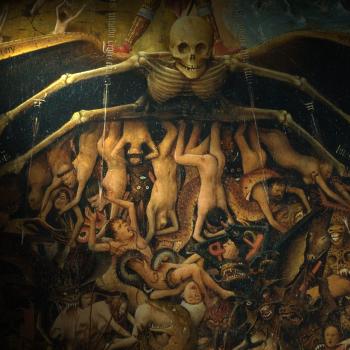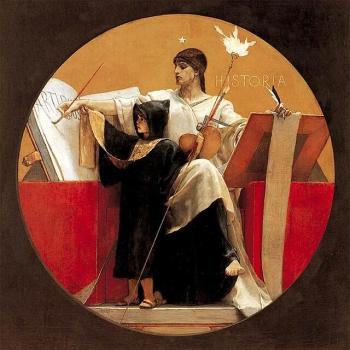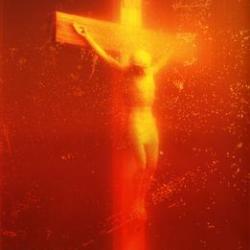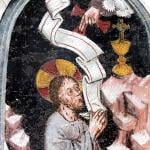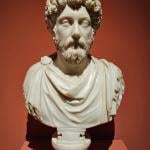NOTE: A shorter version of this post appeared yesterday at The Way of Improvement Leads Home.
The rumors are true. David Barton’s story about children with guns in a 19th century classroom came directly from Bendigo Shafter, a Louis L’Amour novel.
Readers of my blog The Way of Improvement Leads Home will recall a post I did earlier this month in which I reported that Barton debunkers Chris Rodda and Warren Throckmorton traced Barton’s comments on gun control to L’Amour’sBendigo Shafter. In case you missed it, here (scroll down) is Barton on the Glenn Beck Show talking about a story from the 1850s in which a group of elementary school students pulled their guns on an intruder. (Barton tells the story at about the six minute mark in the video).
In a Feb. 21 piece published at his Wallbuilders website, Barton admits that he got this story from L’Amour, but he argues that it is a true story. He writes:
The account comes from noted western historian, Louis L’Amour, one of the most famous writers of both historical western fiction and non-fiction. L’Amour amassed a personal library of 17,000 rare books/diaries/journals/documents particularly focusing on the American west, including numerous handwritten journals of frontier pioneers and settlers. Additionally, he personally interviewed many personalities who had lived in the waning days of the Old West, including gunfighters, cowboys, lawmen, outlaws, and many others. For his outstanding body of work across his lifetime, he received the Congressional Gold Medal and then the Medal of Freedom from President Ronald Reagan.
Later in life, L’Amour recorded a number of interviews, relating interesting practices and incidents he had found in his research. In one such interview, he related the specific real-life account that David cited – a story that he also included in one of his historical novels (he regularly included numerous true stories and anecdotes from the Old West in his stories). So not only did David not make up the anecdote, it actually came from one of America’s most celebrated western historians, who personally attested to its authenticity.
I find it rather appalling that Barton would celebrate a story in which kids in school are armed with guns. Yes, this is the kind of Christian nation we want–elementary students packing heat.
Just as disturbing is the fact that Barton is now using novels to make his historical points. Even my 102-year old grandfather, who has read everything L’Amour has written, is fully aware of the fact that when he reads L’Amour he is reading fiction.
And why didn’t Barton mention the source of this story during his conversation with Beck? After all, he gives so-called “chapter and verse” for every other historical document he cites. Instead Barton tried to pass this story off as something that was a legitimate part of the historical record. This is what can happen when your approach to the past is motivated by contemporary political concerns.
But even if the story was true, by relying on L’Amour’s telling of it instead of a first-hand account of this incident, Barton violates one of his most basic rules of historical interpretation. Over the years he has chided many historians, myself included, for citing secondary sources instead of primary sources. He has tried to discredit authors, including Mark Noll, George Marsden, and Nathan Hatch, for using second-hand accounts of events rather than eyewitness accounts.
For example, in this article from the Wallbuilders site he criticizes “scholars and popular historians” who “routinely utilize secondary sources or take quotations from these sources.” In the article’s first footnote he criticizes me for quoting John Calvin from Gregg Frazer’s doctoral dissertation “rather than the readily available Institutes of the Christian Religion.” What he fails to mention is that the quote from Frazer’s dissertation is not wrong–it can be found in Calvin’s Institutes. It is a quote that is easily traceable to the primary source.
By telling the 1850s story about kids pulling their guns on an intruder,Barton is giving authority to an account from a secondary source (L’Amour) that is impossible to trace to the original source. Such an approach to evidence contradicts what the Wallbuilders website has said about the way Barton goes about his research:
Scholars and popular historians routinely utilize secondary sources or take quotations from these sources, but when David returned to this subject for his 1996 book Original Intent, he decided to only rely on quotations that could be found in original primary source material. In an effort to be thoroughly transparent, he placed the handful of secondary quotations from Myth of Separation on an “Unconfirmed Quotations” list which he posted on WallBuilder’s website. At that time, he challenged writers on all sides of the debate over religion in the Founding Era to stop relying on secondary sources and quotations from later eras and instead to utilize original sources.
I wonder if the L’Amour story will find its way onto an “unconfirmed stories” list
Historians can have honest disagreements about whether the L’Amour story, or other oral traditions passed down through the years, can be used as legitimate historical evidence. They can also debate whether citing a primary source that is quoted in a secondary source is good practice. But when David Barton attacks historians for using second-hand accounts and then goes ahead and does it himself for the purpose of using the “past” to make a political point on the Glenn Beck Show, he deserves criticism.
Yet another reason why Christians should not trust David Barton.




